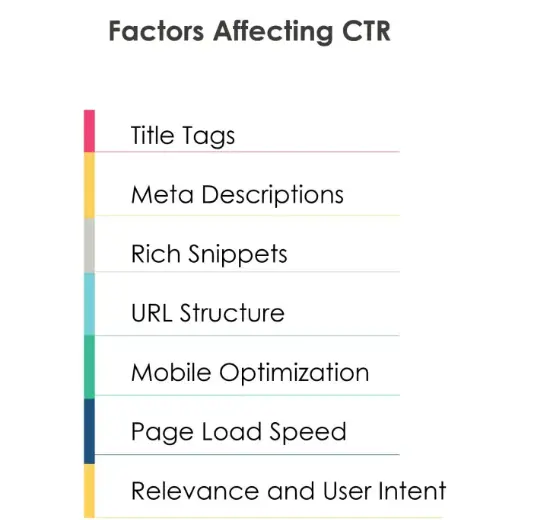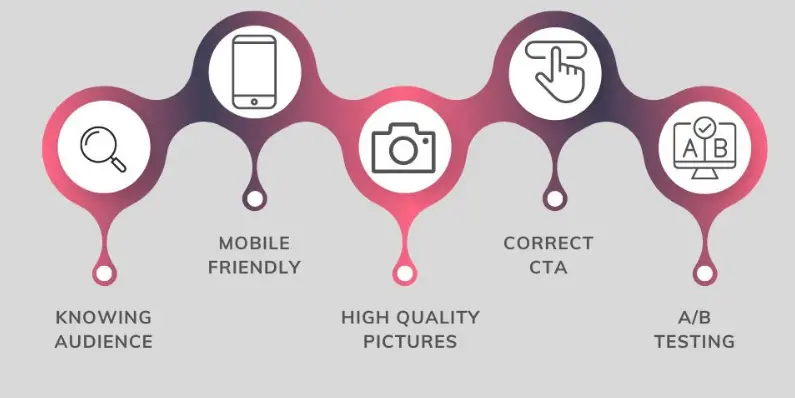What is CTR?
Click-through rate (CTR) is a metric used to measure the success of an online advertising campaign. It represents the percentage of people who click on an ad after seeing it.
The CTR calculator is about dividing the number of clicks by the number of impressions and multiplying by 100. For example, if an ad has 1,000 impressions and 100 clicks, the CTR meaning is 10%.
Importance of CTR in Online Marketing
CTR is crucial for several reasons:
- Performance Indicator: A high CTR meaning your ad is appealing to your audience. Imagine running an ad for a new smartphone. A high CTR meaning people are interested in learning more about your product.
- Cost Efficiency: CTR affects your ad costs. Online platforms often lower costs for ads with higher CTR due to their effectiveness. Picture spending less on ads because your compelling content consistently drives clicks.
- Audience Insight: Analyzing CTR helps you understand what content resonates with your audience. If a travel blog post has a higher CTR meaning, it shows a stronger interest in travel-related content, guiding future content creation.
Sugggested Reading:
Customer Engagement Platform
Factors Affecting CTR
Understanding what influences CTR can help you create more effective ads and links. By focusing on key factors, you can improve engagement and achieve better marketing results.

Quality of the Ad or Link
High-quality ads attract more clicks. A visually appealing and well-written ad for a new clothing line will likely get more clicks than a poorly designed one. Quality content makes your audience curious and eager to learn more.
Placement and Visibility
Ads placed in prominent positions get more attention. An ad for a local restaurant placed at the top of a popular food blog will see higher CTR than one buried in less visible areas. Visibility ensures your audience notices your ad.
Audience Targeting and Relevance
Relevance to the audience is crucial. Targeting ads for hiking gear to outdoor enthusiasts increases CTR. When your ad aligns with the interests of your audience, they are more likely to click on it.
Improving Your CTR
Improving CTR meaning, crucial for the success of your online marketing campaigns. By focusing on specific strategies, you can make your ads more attractive and increase engagement.

Crafting Compelling Headlines and Ad Copy
To craft compelling headlines and Ad copy follow:
- Engaging Headlines: A headline like "Unlock the Secrets to Fast Weight Loss" for a health blog can grab attention immediately. It promises value and stirs curiosity.
- Clear Ad Copy: Ad copy that highlights benefits, such as "Lose 10 Pounds in 30 Days with Our Program," provides clear incentives for clicking. Concise and compelling copy is key to improving CTR.
Using Strong Calls-to-Action (CTAs)
For using strong CTAs, follow:
- Actionable CTAs: Phrases like "Shop Now," "Sign Up Today," or "Get Your Free Ebook" encourage users to take immediate action. A travel agency ad with "Book Your Dream Vacation Now" can drive more clicks due to its urgency and appeal.
A/B Testing Different Versions of Ads
It is essential to A/B testing different versions of Ads:
- Testing Variations: By running two versions of an ad for a new product, you can determine which performs better. One version might use an image, while the other uses a video. Tracking the CTR of each can reveal which format resonates more with your audience.
Importance of Visuals (Images and Videos)
The importance of visuals is as:
- Eye-catching Images: High-quality images in an ad for a beach resort can attract viewers quickly. Visuals that evoke emotion or aspiration tend to increase CTR meaning.
- Engaging Videos: Short, engaging videos showcasing a product in action, such as a demo of a new tech gadget, can capture attention more effectively than static images or text. Videos can convey more information in less time, making them highly effective in boosting CTR meaning.
Suggested Reading:
Behavioral Marketing
Analyzing CTR Data
Analyzing CTR data is essential for understanding the performance of your online marketing efforts. By using the right tools and interpreting data correctly, you can optimize your strategies and avoid common pitfalls.
Tools for Measuring CTR
The tools for CTR calculator is as:
- Google Analytics: This tool helps you track CTR on your website and ads. For example, it can show how many users clicked on a banner ad leading to a specific landing page.
- Ad Platforms: Facebook Ads and Google Ads provide built-in CTR tracking. These platforms display the percentage of clicks for each ad campaign, helping you understand which ads perform best.
How to Interpret CTR Data
Here’s a way for interpreting CTR data:
- High CTR: Indicates that your ad is resonating with your audience. For instance, an ad for a summer sale with a high CTR suggests strong interest in the promotion.
- Low CTR: Suggests that your ad might not be engaging or relevant. If an ad for winter coats has a low CTR during the summer, it may indicate poor timing or audience targeting.
Common Mistakes in CTR Analysis
The common mistakes in CTR analysis are:
- Ignoring Context: Failing to consider the context, such as seasonality or audience behavior, can lead to misinterpretation. An ad for holiday gifts will naturally have a lower CTR in July compared to November.
- Overemphasis on CTR: Focusing solely on CTR without considering conversion rates can be misleading. An ad might have a high CTR but low conversions, indicating that while it attracts clicks, it doesn't lead to sales.
Frequently Asked Questions (FAQs)
What is CTR?
CTR (Click-Through Rate) measures the percentage of people who click on a link or ad after viewing it. CTR calculator calculates by dividing the number of clicks by the number of impressions.
Why is CTR important?
CTR is crucial because it indicates how effective your ad or link is at capturing audience interest. A higher CTR often means your content is resonating well with your target audience.
How can I improve my CTR?
Improve CTR by crafting compelling headlines, using strong calls-to-action, incorporating engaging visuals, and performing A/B testing to optimize ad performance.
What tools can I use to measure CTR?
Tools like Google Analytics, Facebook Ads Manager, and Google Ads are excellent for measuring CTR. They provide detailed insights into how your ads and links are performing.
What is a good CTR?
A good CTR varies by industry and platform, but generally, a CTR of 2-3% is considered average. Higher CTRs indicate better engagement and ad effectiveness.
